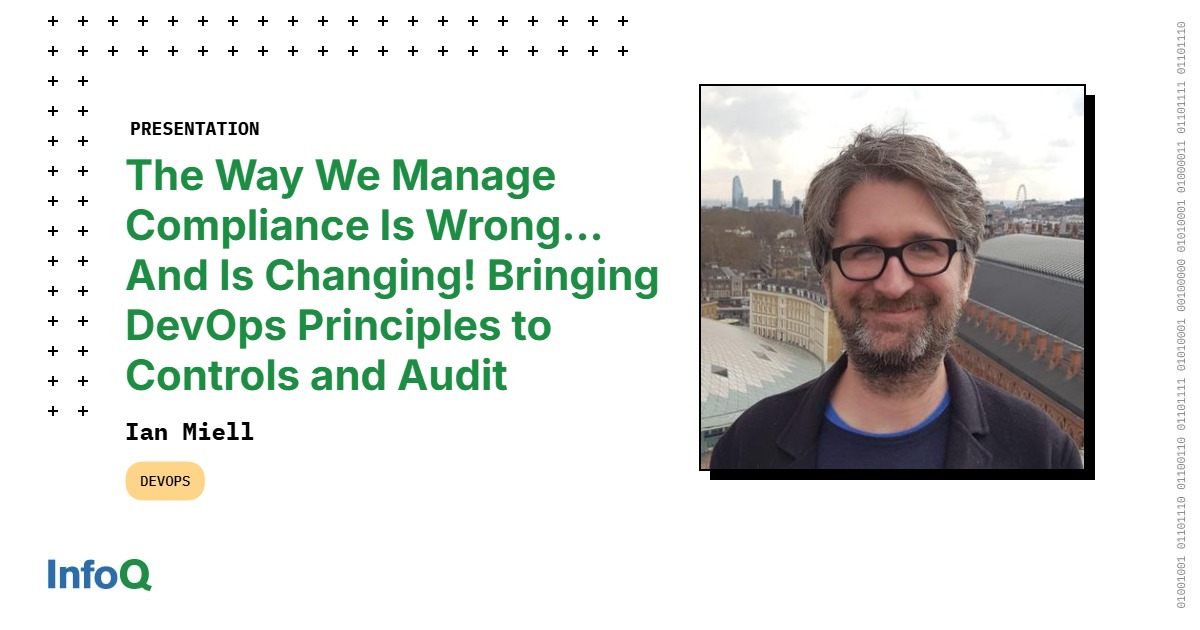Software development
Software development
[ follow ]
#ai-assisted-development #github-copilot #performance #code-quality #vibe-coding #ubuntu #cloud-native #android
fromInfoWorld
2 hours agoDo programming certifications still matter?
"Certifications are shifting from a checkbox to a compass. They're less about proving you memorized syntax and more about proving you can architect systems, instruct AI coding assistants, and solve problems end-to-end," says Faizel Khan, lead AI engineer at Landing Point, an executive search and recruiting firm. "In the AI era, fewer students will get trained on the job, which means they have to train themselves," Khan says. "Certifications-especially architectural ones like AWS, Kubernetes, Terraform-are still the clearest path to do that."
Software development
fromInfoQ
6 days agoVercel Ship AI 2025 Key Announcements and Technical Updates
Among the releases was the beta version of AI SDK 6, which adds an agent abstraction layer for defining and reusing AI agents in projects. This layer allows developers to specify agent behaviors once and apply them across different parts of an application. The SDK also incorporates tool execution approval, integrating human-in-the-loop processes to review and confirm AI actions before they proceed. Type safety extends across supported AI models and user interfaces, ensuring data consistency and reducing runtime errors through compile-time checks.
Software development
fromInfoQ
6 days agoSpring News Roundup: First Release Candidates of Boot, Security, GraphQL, Integration, Modulith
The first release candidate of Spring Boot 4.0.0 delivers bug fixes, documentation improvements, dependency upgrades and new features such as: support for the new Spring Framework interface; and completion of modularizing the codebase to " reduce the size of a typical Spring Boot application and provide stronger auto-configuration signals." More details on this release may be found in the release notes and this wiki page.
Software development
fromMedium
7 months agoBuilding a Full-Stack Component
As modern software systems grow in complexity, they naturally become more modularized and distributed. Rather than maintaining a single, monolithic codebase, development teams increasingly structure their applications as loosely-coupled components. This approach allows teams to work autonomously, focusing on specific areas of the system without the need to grasp its entirety. Traditionally, modularity in software has been driven by technical considerations - separating frontend and backend services based on their runtimes, technologies, or infrastructure needs.
Software development
fromLogRocket Blog
4 days agoExploring spec-driven development with the new GitHub Spec Kit - LogRocket Blog
If you've used an AI coding assistant before, you've probably experienced vibe coding. You start with an idea, throw a high-level prompt at the AI, and wait to see what comes out. Sometimes it's close. Sometimes it's completely off. Either way, it often takes several rounds of tweaking to get what you actually want. That endless loop of prompting, generating, and fixing can get frustrating fast.
Software development
Software development
fromTechCrunch
4 days agoAdobe Firefly Image 5 brings support for layers, will let creators make custom models | TechCrunch
Adobe launched Firefly Image 5 with native 4MP image generation, improved human rendering, layered prompt-based editing, custom artist-trained models, and expanded audio/video features.
fromBitcoin Magazine
5 days agoIBM Launches "Digital Asset Haven" To Help Banks And Governments Enter Into Crypto
The platform, developed in collaboration with crypto wallet provider Dfns, combines IBM's infrastructure and security expertise with Dfns' institutional-grade custody and wallet technology. At its core, Digital Asset Haven wants to simplify what has long been a tricky and complex landscape for institutions. Many banks and governments have been cautious about crypto because it involves multiple blockchains, regulatory hurdles, and security risks. IBM's platform wants to change this and consolidate these moving parts, offering a single solution.
Software development
fromZDNET
13 hours ago6 hidden GNOME Search tricks every Linux user should try
I've used so many GNOME and GNOME-based desktops over the years that I can't even recall them all. One thing that has been constant over the years is that GNOME is far more useful than you might think. Sure, it looks minimal, but that's all about getting out of your way and not stripping down features. One of the cool features of the GNOME desktop is the search functionality. At first blush, it seems the search tool is just a means to locate the app you want to run.
Software development
fromTechzine Global
1 day agoCursor 2.0 introduces parallel agents and new model
IDE Cursor launches version 2.0 with multiple improvements. Up to eight agents can now work in parallel on the same codebase, while a new proprietary model runs 4x faster than comparable alternatives. Voice control is also being introduced. Cursor introduces Composer, the first proprietary agentic coding model. This frontier model is four times faster than equally intelligent alternatives, the company claims. The model can generate and modify code based on natural language.
Software development
fromNedbatchelder
3 days agoSide project advice
I pointed out that for software engineers, the code is the product. For research, the results are the product, so there's a reason the code can be and often is messier. It's important to keep the goal in mind. I mentioned it might not be worth it to add type annotations, detailed docstrings, or whatever else would make the code "nice".
fromInfoWorld
10 hours agoTypeScript rises to the top on GitHub
The third shift is in the way that AI is reshaping developer choice, not just code. In the past, developer choice referred to choosing an IDE, language, or framework. In the present timeframe, that has changed. GitHub now sees a correlation between the rapid adoption of AI tools and evolving language preferences. This and other shifts suggest AI now influences not only how fast code is written, but which languages and tools developers use.
Software development
fromNew Relic
3 days agoAnnouncing more GitHub Copilot + New Relic AI integrations to boost developer productivity and experience
The core challenges impacting developer productivity and experience are clear. In the 2025 Stack Overflow Developer Survey, nearly half (45%) of developers spend more time debugging AI-generated code than writing it. This, coupled with constant context-switching and manual troubleshooting, leads to significant time loss. New Relic's unified Intelligent Observability Platform addresses these issues by integrating disparate systems and performance data, providing crucial context, and driving actionable insights.
Software development
fromInfoQ
2 days agoBeyond Accidental Quality: Finding Hidden Bugs with Generative Testing
Automated tests are the cornerstone of modern software development. They ensure that every time we build new functionalities, we do not break existing features our users rely on. Traditionally, we tackle this with example-based tests. We list specific scenarios (or test cases) that verify the expected behaviour. In a banking application, we might write a test to assert that transferring $100 to a friend's bank account changes their balance from $180 to $280.
Software development
fromSitePoint Forums | Web Development & Design Community
6 days agoProgramming is morphing from a creative craft to a dismal science
But LLMs took it a notch even further, coders have started morphing into LLM prompters today, that is primarily how software is getting produced. They still must baby sit these LLMs presently, reviewing and testing the code thoroughly before pushing it to the repo for CI/CD. A few more years and even that may not be needed as the more enhanced LLM capabilities like "reasoning", "context determination", "illumination", etc. (maybe even "engineering"!) would have become part of gpt-9
Software development
fromInfoWorld
16 hours agoCursor 2.0 adds coding model, UI for parallel agents
Anysphere has introduced Cursor 2.0, an update to the AI coding assistant that features the tool's first coding model, called Composer, and an interface for working with many agents in parallel. Both Cursor 2.0 and Composer were introduced October 29 by the Cursor team at Anysphere. Cursor is a fork of Microsoft's popular Visual Studio Code editor, downloadable at cursor.com for Windows, MacOS, and Linux.
Software development
Software development
fromZDNET
9 hours agoGitHub's new Agent HQ gives devs a command center for all their AI tools - why this is a huge deal
GitHub launches Agent HQ to integrate OpenAI Codex and multiple AI agents, providing developers a unified Mission Control to manage agentic development workflows.
Software development
fromInfoQ
4 days agoInside Duolingo's FinOps Journey: Turning Cloud Spend into Engineering Insight
Embedding FinOps into engineering workflows makes cost efficiency a core engineering quality, letting developers see cost impacts and prioritise optimisations alongside reliability and performance.
Software development
fromBusiness Matters
4 days agoThe future of insurance technology: a cloud-native insurance platform
Cloud-native, API-first insurance platforms streamline operations, enable rapid product configuration, automate underwriting and claims, and support scalable, global, digital-first insurance growth.
fromInfoWorld
11 hours agoThe quiet glory of REST and JSON
I've been writing code long enough to remember when computers had 5¼-inch floppy drives and exactly zero network cards. Connectivity was a 2400 baud modem talking to a local BBS via the plain old telephone system. The notion of two computers talking to each other was conceivable-but just the two. The Internet was just a twinkle in the eyes of a few DARPA engineers.
Software development
Software development
fromInfoWorld
16 hours agoKey principles of a successful internal developer platform
An internal developer platform centralizes infrastructure and workflows to enable faster delivery, secure compliant environments, and self-service golden paths for developers and platform engineers.
fromTheregister
1 day agoThe clock's ticking for MySQL 8.0 as end of life looms
Percona, a provider of open source database support services and Database-as-a-Service (DBaaS), has warned that more than half its MySQL instances remain on MySQL 8.0, support for which ends on April 30, 2026. Peter Zaitsev, Percona co-founder, told The Register: "Every piece of complex software has bugs which may not have been found yet. Some of those bugs are also security bugs.
Software development
fromVue.js Jobs
3 days agoSenior Engineering Manager (d/f/m) - HRIS at Leapsome - VueJobs
Leapsome is the AI-powered people platform revolutionizing HR for modern teams. Leapsome drives HR excellence and empowers high-performing teams by automating, connecting, and simplifying every HR process across the employee lifecycle - from onboarding and performance management to engagement and development. Built with ease of use in mind, our platform ensures high adoption by employees, managers, and People teams alike.
Software development
fromArs Technica
2 days agoGoogle makes first Play Store changes after losing Epic Games antitrust case
Since launching Google Play (née Android Market) in 2008, Google has never made a change to the US store that it didn't want to make-until now. Having lost the antitrust case brought by Epic Games, Google has implemented the first phase of changes mandated by the court. Developers operating in the Play Store will have more freedom to direct app users to resources outside the Google bubble. However, Google has not given up hope of reversing its loss before it's forced to make bigger changes.
Software development
Software development
fromInfoQ
1 week agoCloudflare Introduces Email Service to Compete with Amazon SES, Resend, and SendGrid
Cloudflare launched a global managed Email Service in private preview letting Workers send and receive email with native bindings and automatic DNS deliverability configuration.
Software development
fromTechzine Global
1 week agoRed Hat Developer Lightspeed accelerates development workflows
Red Hat Developer Lightspeed provides integrated generative AI assistants and an automated migration toolkit to accelerate cloud-native application modernization while balancing performance, cost, and privacy.
Software development
fromApp Developer Magazine
10 months agoRelic research shows high impact IT outages carry $76M median year
Full-stack observability halves outage costs, reduces outage frequency, and speeds detection, lowering median high-impact outage costs from $2M to $1M per hour and cutting MTTD by seven minutes.
fromInfoQ
1 week agoHow to Enable Testing a Distributed System on a Single Environment Using Proxy Routing
They had previously invested in a homegrown command line interface program that would run their entire environment on a continuous integration runner, but it turned out it took 15-30 minutes to get the framework up before even running a test, Chia said. There were also build failures from time-outs, and the developer of the system left the company, and nobody knew how to maintain it.
Software development
fromInfoQ
1 week agoMCP Support in Visual Studio Reaches General Availability
Microsoft announced in August 2025 that support for the Model Context Protocol (MCP) is generally available in Visual Studio. MCP enables AI agents within Visual Studio to connect to external tools and services via a consistent protocol. The announcement notes that Visual Studio now provides new means to configure and manage MCP servers. MCP, introduced by Anthropic in 2024, is an open standard that simplifies interactions between AI‑enabled development workflows and external systems such as databases, code search engines and deployment pipelines.
Software development
Software development
fromLogRocket Blog
1 week agoDon't ship blind: A practical checklist for internal launch readiness - LogRocket Blog
Internal products rarely receive public attention but significantly reduce costs, improve efficiency, enable scale, and require distinct communication, stakeholder management, and success metrics.
fromInfoWorld
1 week agoA practitioner's primer on deterministic application modernization
Large organizations rarely have just a handful of applications. They have thousands, often representing billions of lines of code. These code bases span decades of frameworks, libraries, and shifting best practices. The result: outdated APIs, inconsistent conventions, and vulnerabilities that put delivery and security at risk. Manual refactoring doesn't scale in this environment. OpenRewrite was created to solve this. OpenRewrite is an open-source automated refactoring framework that enables safe, deterministic modernization for developers.
Software development
fromLondon Business News | Londonlovesbusiness.com
1 week agoWhy is the UK a hub for app and web development companies? - London Business News | Londonlovesbusiness.com
Businesses around the world come here due to its superior infrastructure, abundant talent pool and supportive business environment; hence businesses from around the globe choose UK mobile app development companies over others globally. In this article, we investigate why so many choose an UK mobile app development or UK web development firm and examine why its tech ecosystem uniquely positions it for global success.
Software development
Software development
fromLogRocket Blog
1 week agoWhere AI-assisted coding accelerates development - and where it doesn't - LogRocket Blog
AI collaboration with engineers has transformed software development workflows, accelerating productivity while introducing new tooling, approaches, and novel pitfalls.
Software development
fromInfoQ
1 week agoTransforming Primary Care: A Case Study in Evolving From Start-Up To Scale-Up
Applying domain-driven principles and deliberate architectural boundaries restores control and prevents organic technical decay that turns clean systems into tangled dependency webs during product evolution.
fromTheregister
1 week agoGoogle porting all internal workloads to Arm, with AI helper
Google has revealed it's ported around 30,000 of its production packages to the Arm architecture and plans to convert them all so it can run workloads on both its own Axion silicon and x86 processors. The search and ads giant documented its move in a preprint paper published last week, titled "Instruction Set Migration at Warehouse Scale", and in a Wednesday post that reveals YouTube, Gmail, and BigQuery already run on both x86 and its Axion Arm CPUs - as do around 30,000 more applications.
Software development
[ Load more ]










